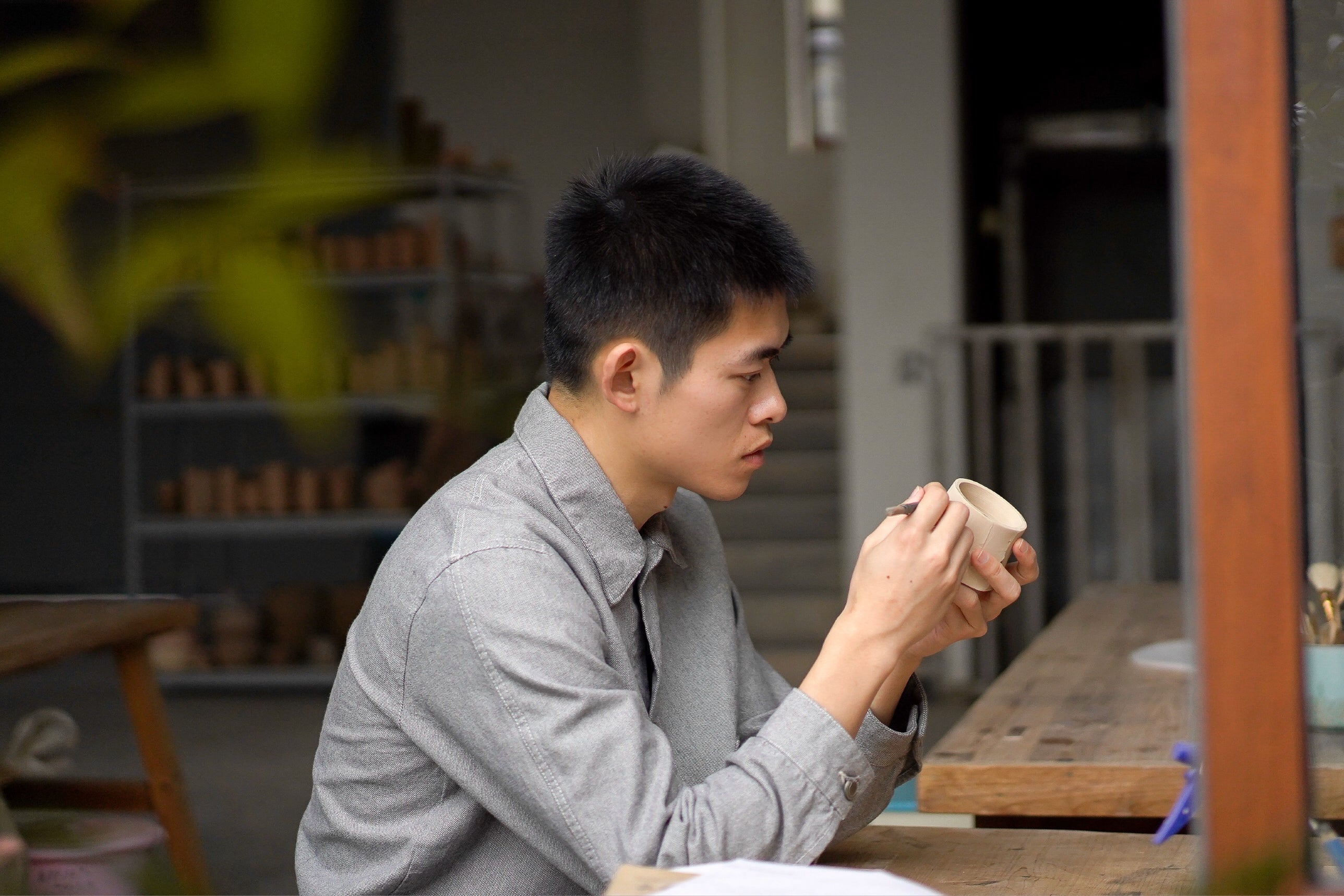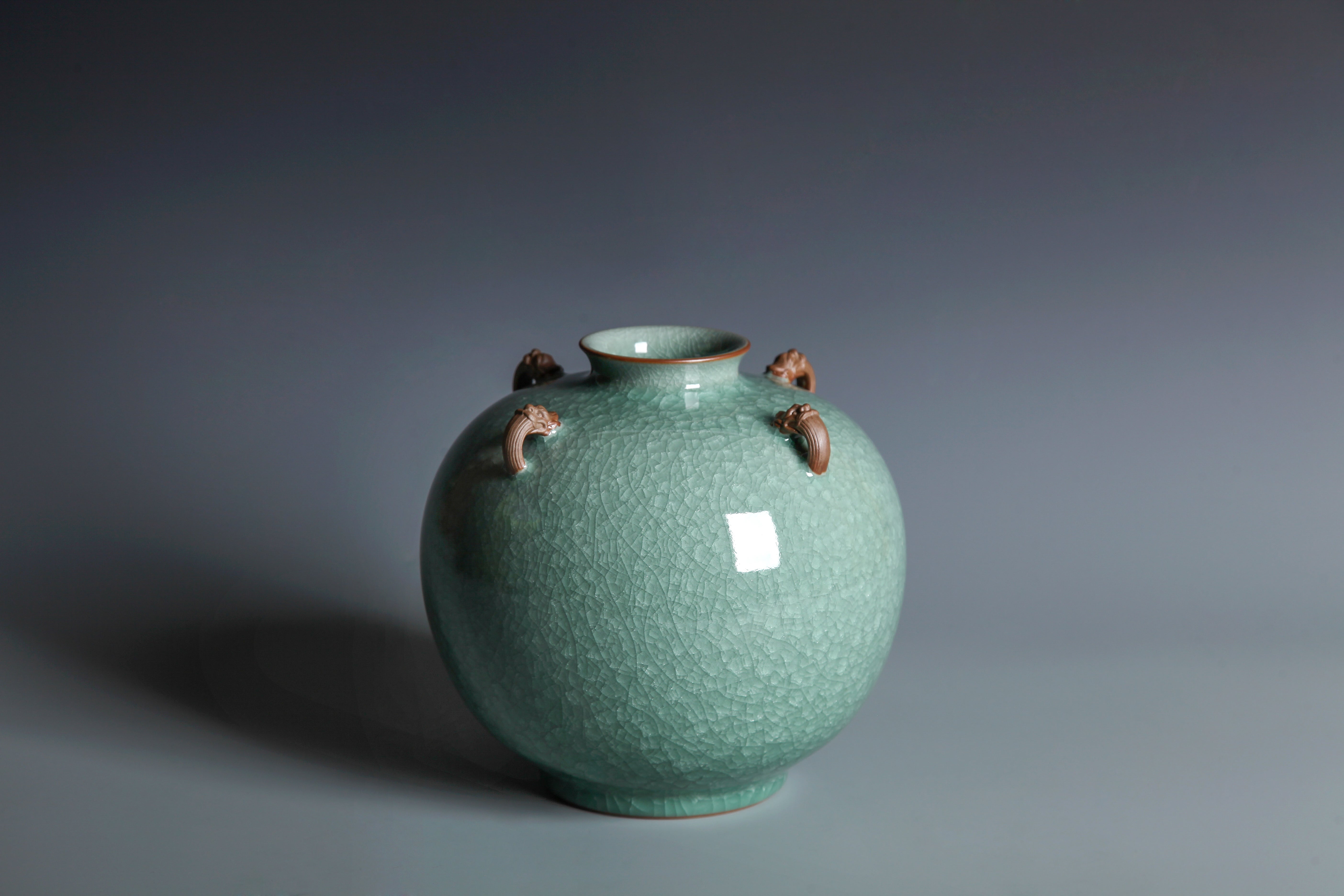Creating tradition with a glaze of modernity
THE ARTICLES ON THESE PAGES ARE PRODUCED BY CHINA DAILY, WHICH TAKES SOLE RESPONSIBILITY FOR THE CONTENTS

Ye Chenxi turned away from the lure of big city life seven years ago and went back to his mountainous home to carry on the family tradition.
The 29-year-old from Longquan, a small city of East China’s Zhejiang province, has been working on modern designs for celadon, a green-glazed Chinese ceramic that first appeared during the Three Kingdoms (220-280) and reached its zenith in the middle and late periods of the Song Dynasty (960-1279).
Longquan has been a major site for celadon production. The Longquan celadon features multiple layers of greenish or greyish blue glaze, which resemble jade. Ye’s family has been engaged in celadon craftsmanship for more than 200 years. His father is a sixth-generation inheritor, who spent five years experimenting with a recipe, lost for a thousand years, for celadon products with a cracked ice surface. He eventually restored the stunning glaze pattern in 2001.
“It was a sense of responsibility that had me decide to carry on what my family has been doing,” Ye said.
Celadon has been widely used in Longquan, where Ye spent many a childhood summer vacation at his grandparents’ place.
“The stretchy green mountain and farmlands leapt into my eyes when I opened the window in the morning,” he said. “It was just close to beauty of the glaze colour of celadon.”
Across the river, he often saw wisps of smoke rise from the chimney of the ceramic plant where his father worked. Ye played with his friends at the plant sometimes, and the scene where adults were working on the clay was also etched on his mind.

“The furnace was huge and could take in hundreds of bottles and plates,” he recalled.
At dinner time, Ye’s grandmother would serve steaming food on the celadon wares. “Now I think of it, the green colour really set off the food, stimulating one’s appetite,” Ye said.
Ye finished product and interior design studies in college in Hangzhou, capital of Zhejiang province in 2015. After he looked at celadon through the eye of a design student, Ye discerned the potential of celadon innovation.
In his opinion, the overall celadon industry has been strictly sticking to tradition and there’s big room for modern design and innovation that would help popularise the ancient art among younger consumers. Ye applied to pursue a master’s degree in ceramic design at Jingdezhen Ceramic Institute in Jiangxi province in 2016.
“I needed to know more about celadon to further my goal,” he said.
Upon his arrival, he was immediately drawn to the open and inclusive ceramic art ambience permeating through Jingdezhen, widely considered as China’s porcelain capital. During his study in Jingdezhen, Ye developed many innovative celadon works, such as the Forest of Ceramic Language, which tried to express the interweaving of humanity and nature.
Ye put together wood and ceramics and developed them into an English afternoon tea set. His work won the silver prize at the 11th China Ceramic Art Exhibition in 2018. In 2020, he used leather and wood on celadon and made a set of items for study rooms, such as pen holders and ink boxes and showed them at a Shanghai exhibition.
“Young people were interested in my things,” he said. It has encouraged him to make further inroads in celadon product design. “The goal is to make celadon closer to the public and cheaper.”
Previously published on Chinadaily.com.cn

Bookmark popover
Removed from bookmarks